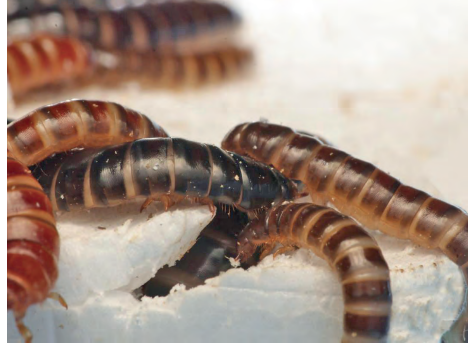
As the global community continues to grapple with the plastic waste crisis, scientists have discovered the mealworm’s plastic-eating abilities, bringing new hope for a cleaner, more sustainable future.
Scientists from the International Centre of Insect Physiology and Ecology have uncovered a promising solution to the growing plastic waste problem.
A study published in Scientific Reports has revealed the potential of mealworms to consume and degrade plastic, offering a sustainable approach to tackling the plastic pollution crisis.
Dr Fathiya Khamis, a senior scientist at ICIPE and lead researcher of the study, explained that the mealworm’s ability to digest plastic is due to a consortium of bacteria found in its gut.
“Thus, either the mealworm or the bacteria could be harnessed to biodegrade plastic,” she said.
She said while mealworms are often mistaken for ordinary worms, they are actually the larvae of the darkling beetle.
Yellow mealworms (tenebrio molitor) are species of darkling beetle and have been used worldwide to biodegrade plastic.
“However, this is the first time that the lesser mealworm, native to Africa, has been documented to possess this ability.”
According to a report by USAID on ‘Unlocking the Plastics Value Chain,’ plastic pollution continues to be a significant problem in Kenya, despite national commitments and policies aimed at reducing it.
An estimated 92 per cent of plastic waste is mismanaged, with only seven per cent being recycled.
This mismanagement leads to 37 kilotons of plastic waste leaking into the environment and oceans each year.
Globally, more than 400 million tonnes of plastic are produced annually, yet less than 10 per cent is recycled, and an estimated 19–23 million tonnes end up in oceans, rivers and lakes.
The environmental impact of plastic waste is devastating, as it contaminates water, harms ecosystems, contributes to soil degradation and introduces toxic chemicals into the food chain.
The ICIPE study shows that although Africa produces only five per cent and consumes four percent of the world’s plastic, single-use plastics are increasingly prevalent across the continent.
“With this, Africa has become the world’s second most polluted region,” it shows.
The ICIPE researchers focused on the lesser mealworm’s ability to consume polystyrene, which is one of the most common and problematic micro plastics.
Polystyrene is widely used in food storage containers, disposable plates and cups, packaging materials and insulation for construction.
Current recycling methods for polystyrene, such as chemical, thermal and mechanical processes, are costly and often produce toxic by-products that are harmful to both humans and the environment.
“Our study shows that the lesser
mealworm can ingest up to 50 per
cent of polystyrene, particularly
Styrofoam, a form of polystyrene,”
Evalyne Ndotono, an ICIPE PhD
scholar involved in the study, said.







![[PHOTOS] Guardian Angel bus catches fire in Kikuyu](/_next/image?url=https%3A%2F%2Fcdn.radioafrica.digital%2Fimage%2F2025%2F04%2F58287f0a-f201-4a78-87f0-6f147ad8ba8a.jpg&w=3840&q=100)



